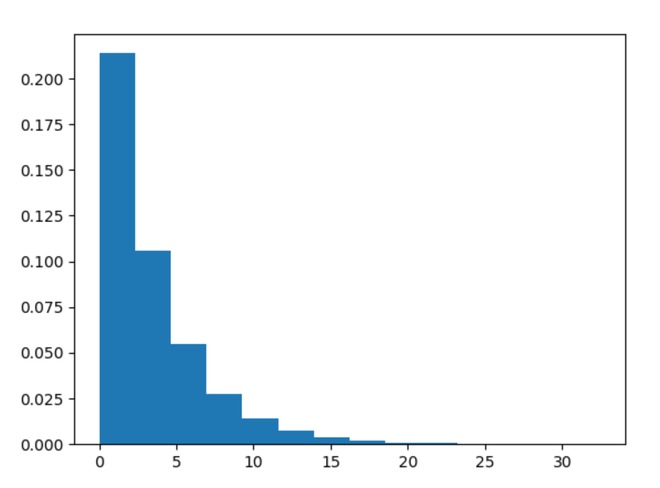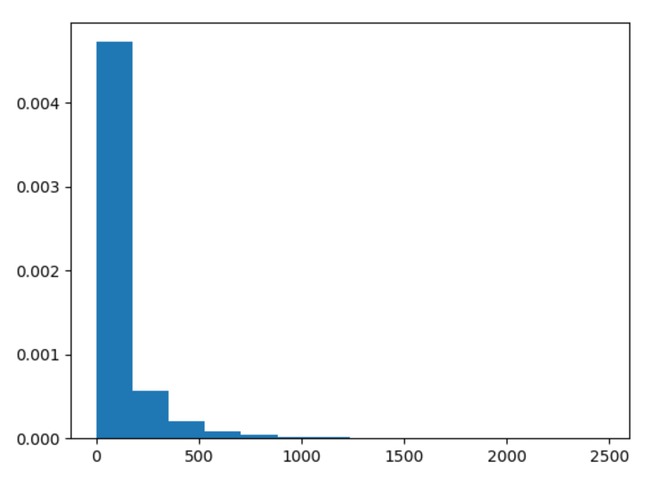借助於numpy.random.exponential()方法,我們可以從 index 分布中獲取隨機樣本,並使用此方法返回隨機樣本的numpy數組。

index 分布
用法:numpy.random.exponential(scale=1.0, size=None)
返回:返回numpy數組的隨機樣本。
範例1:
在此示例中,我們可以看到,通過使用numpy.random.exponential()方法,我們能夠獲取 index 分布的隨機樣本並返回numpy數組的樣本。
Python3
# import exponential
import numpy as np
import matplotlib.pyplot as plt
# Using exponential() method
gfg = np.random.exponential(3.45, 10000)
count, bins, ignored = plt.hist(gfg, 14, density = True)
plt.show()輸出:
範例2:
Python3
# import exponential
import numpy as np
import matplotlib.pyplot as plt
# Using exponential() method
gfg = np.random.exponential(101.123, 10000)
gfg1 = np.random.exponential(gfg, 10000)
count, bins, ignored = plt.hist(gfg1, 14, density = True)
plt.show()輸出:
相關用法
- Python gcd()用法及代碼示例
- Python max() and min()用法及代碼示例
- Python set add()用法及代碼示例
- Python bin()用法及代碼示例
- Python zip()用法及代碼示例
注:本文由純淨天空篩選整理自Jitender_1998大神的英文原創作品 numpy.random.exponential() in Python。非經特殊聲明,原始代碼版權歸原作者所有,本譯文未經允許或授權,請勿轉載或複製。


